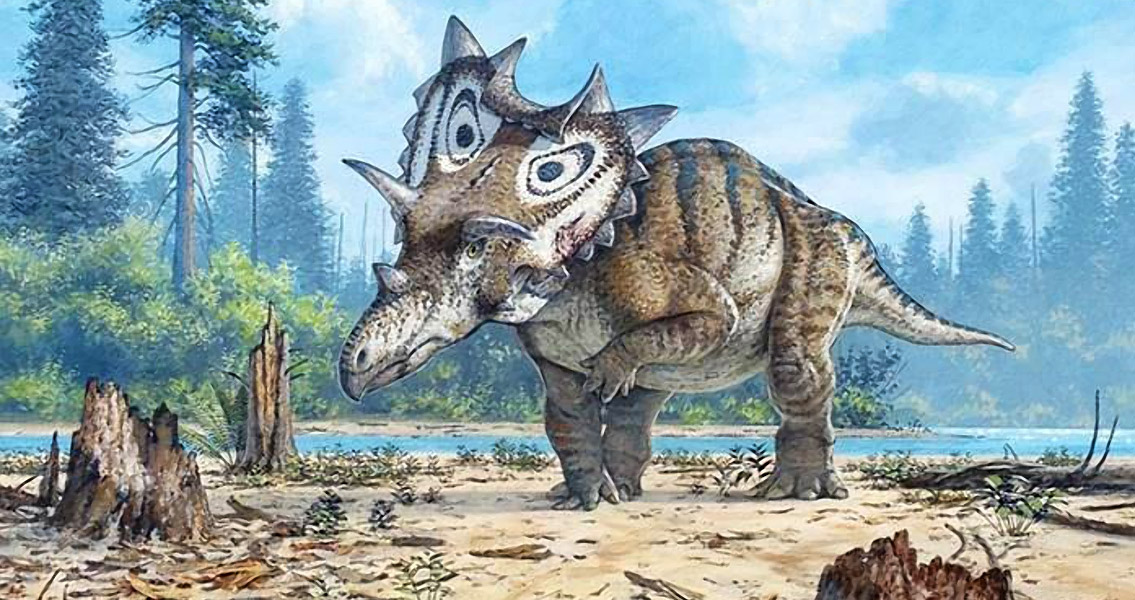<![CDATA[A decade ago dinosaur enthusiast Dr. Bill Shipp thought he would do a little amateur fossil hunting on his property near Winifred, Montana. His chance discovery of bone fragments that day led to this week’s announcement by the Canadian Museum of Nature that a new species of horned dinosaur (ceratopsid) has been identified: Spiclypeus shipporum. This discovery brings the total known dinosaur species found in the Judith River Formation in Montana to nine. This new dinosaur was identified by bones that had been preserved in a silty slope which had once been part of an ancient floodplain, including the skull, backbone, hips and part of the legs from a single animal. What makes Spiclypeus shipporum unique among horned dinosaurs is the manner in which the bones over its eyes were oriented sideways out from the skull, and the unusual way bony spikes emanated from the edge of the frill, with some projected outward as others curled forward. “This is a spectacular new addition to the family of horned dinosaurs that roamed western North America between 85 and 66 million years ago,” Jordan Mallon, the author of the study, explained in a press release from the museum. “It provides new evidence of dinosaur diversity during the Late Cretaceous period from an area that is likely to yield even more discoveries.” After the first bone fragments were found simply lying on the ground, a team from the museum spent another two years excavating and recovering the remaining fossils. An examination of the bones suggests a life of pain for the dinosaur, with the upper section of the arm bone showing obvious signs of bone infection and arthritis. Despite this condition, further analysis involving the growth rings found inside of the bones indicates the dinosaur lived long enough to reach maturity, and was around 10 years old at the time of death. Ceratopsids were megaherbivores which arose within the Late Cretaceous period and quickly diversified in North America and Asia, becoming one of the most expansive dinosaur groups at the time. Their horned craniums and ornamental frills make them easy to recognize. The study, which was published in PLOS ONE, notes that none of the nine species found at the Judith River Formation has been unearthed in states lying to the south of Montana, which suggests the dinosaur fauna found in western North America 76 million years ago were highly localized. Some of Mallon’s earlier research shows that communities of herbivores that are considered as being species-rich may have been possible because of dietary specializations, a phenomenon referred to as niche partitioning. Recognized as historically important, the Judith River Formation (included within the Judith River Group) is a geologic, fossil-bearing formation located in Montana. It dates back to the Cretaceous period, 80 to 75 million years ago, and corresponds to the “Judithian” age of land vertebrates. The dinosaur’s name, Spiclypeus, is derived from the Latin word which means “spiked shield”, and shipporum is to honor the Shipp family. For more information, the full article is available here Image courtesy of Mike Skrepnick (c) Mike Skrepnick]]>
Decade Old Discovery Leads to New Dinosaur Species
